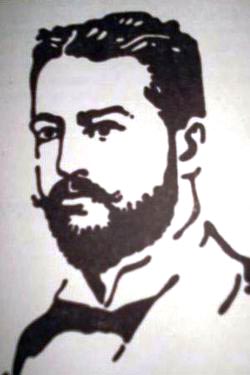3.7.16 The career of José de Armas y Cárdenas (1866 – 1919) in literary criticism

José de Armas y Cárdenas signed his texts with the pseudonym Justo de Lara. He received his early education in the United States and eventually earned a degree in Civil and Canon Law from the University of Havana. However, he primarily worked as a journalist and literary critic. He began the latter career at the age of 18, and two years earlier, he had already published the text “The Madness of Sancho” in La Nación.
This was the first in a series of works dedicated to the study of Don Quixote by Miguel de Cervantes, which also included the texts “Don Quixote by Avellaneda and its Critics” – which earned him praise from the wise Spanish philologist Marcelino Menéndez Pelayo -, “Something about Don Quixote”, “The Two Quixotes” and “A Censor of Cervantes”.
His interests extended beyond Spanish-language literature, as evidenced by his texts “The Reformation and the Renaissance in the 16th Century and Marlowe” and “Contemporaries and Shakespeare,” both published in “Revista Cubana.” He also translated some of Shakespeare’s sonnets into Spanish.
His criticism, unlike what was usual at the time, was characterized by a measured assessment and respect for opinions expressed by other figures that he did not share, based on a notable erudition, which, however, is not the most outstanding feature of his writings of this nature.
Among the articles he wrote about island literature are “A Novel and a Study; In Search of the Link, by Francisco Calcagno,” from 1889; in which he expressed skepticism regarding the possibility of reconciling the contributions of science with the requirements of literature as an art.
He also wrote “The Mistake of a Genius (José María Heredia)”, from 1891, “Triquitraques (Critique by Fray Candil Emilio Bobadilla)” and “Julián del Casal”, the last two from 1892, all published in “La Habana elegante”.
The texts reveal some misunderstandings regarding the political attitude and stylistic configurations of the works of Heredia and Casal. I would criticize the latter for a Frenchification that was nothing more than an emerging aesthetic and that, in any case, did not serve as the sole lyrical source of inspiration for the poet of “Nieve.”
His political and literary criticism work has appeared in a wide range of periodicals in the United States, Spain, and Cuba, including: Las Avispas (first published in Havana and later in New York), The New York Herald, and The Sun; El Peregrino (first published in Havana and later in New York), La Edad Media (first published in Madrid), El Liberal (first published in Madrid), and Blanco y Negro (first published in Madrid); Nacion (first published in Madrid), La Lucha (first published in Madrid), Revista Cubana (first published in Cuba), El Figaro (first published in Spain), El Trunco (first published in Spain), El País (first published in Cuba), El Día (first published in the Dominican Republic), Diario de la Familia (first published in Spain), Diario de la Marina (first published in Cuba), La Prensa (first published in Spain), La Discusión (first published in Spain), El Comercio (first published in Cuba), Cuba y América (first published in America), Contemporary Cuba (first published in Spain), Social (first published in Spain), El Mundo (first published in Cuba), and Heraldo de Cuba (first published in Cuba).








